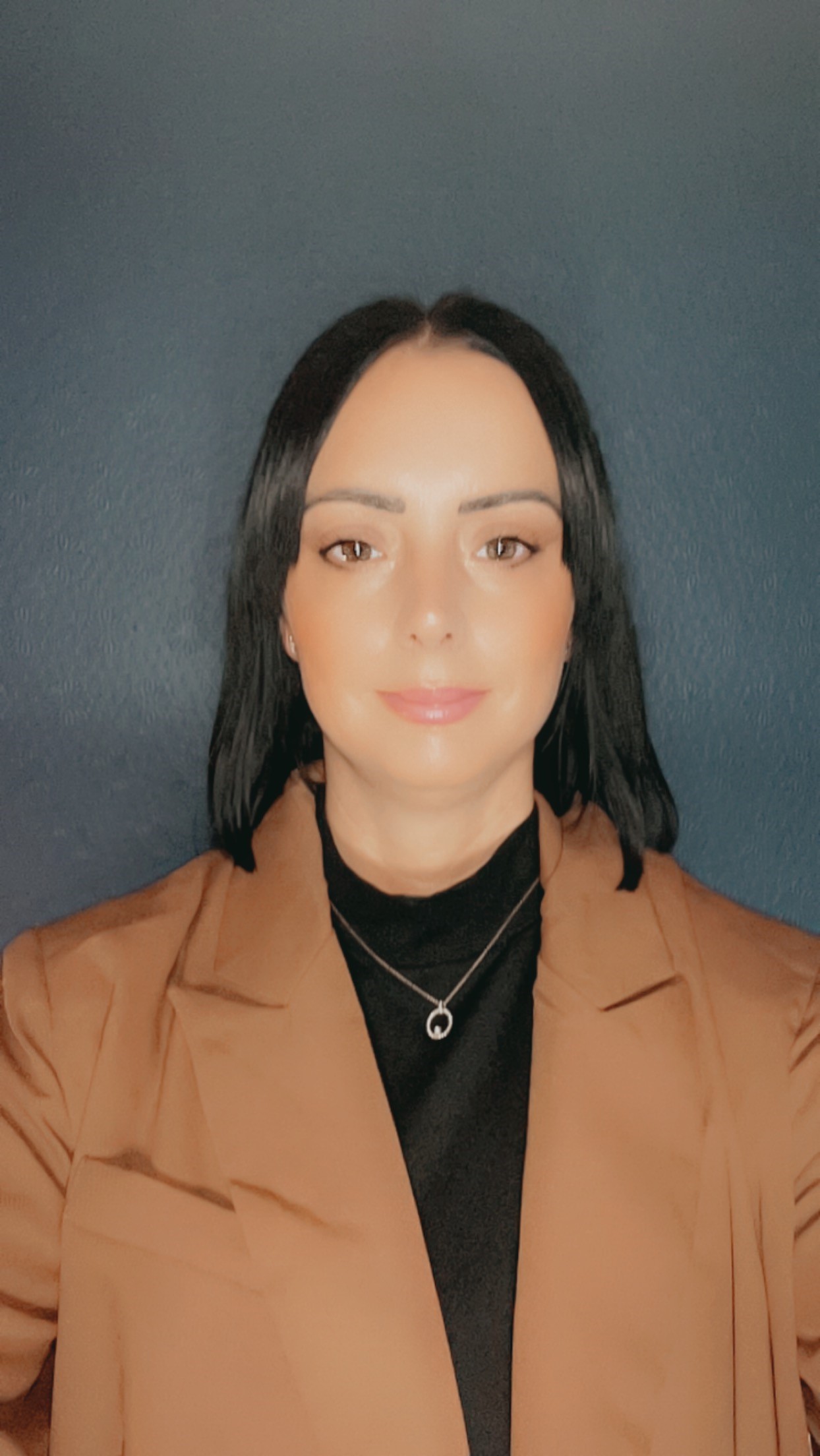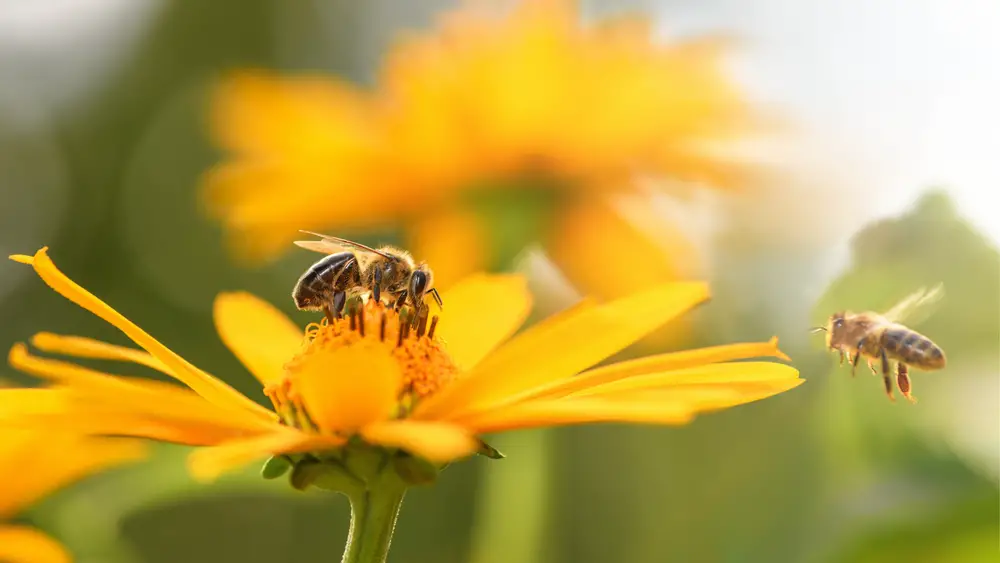Pollinators are an essential part of many plants’ lives. But what are pollinators, and why are they so important?
Pollinators are insects and animals (or wind and rain) that take pollen from one plant and deliver it to another of the same species, resulting in pollination. Pollination is part of a plant’s reproductive process. Without pollinators, many plant species would struggle to survive.
What Are Pollinators?
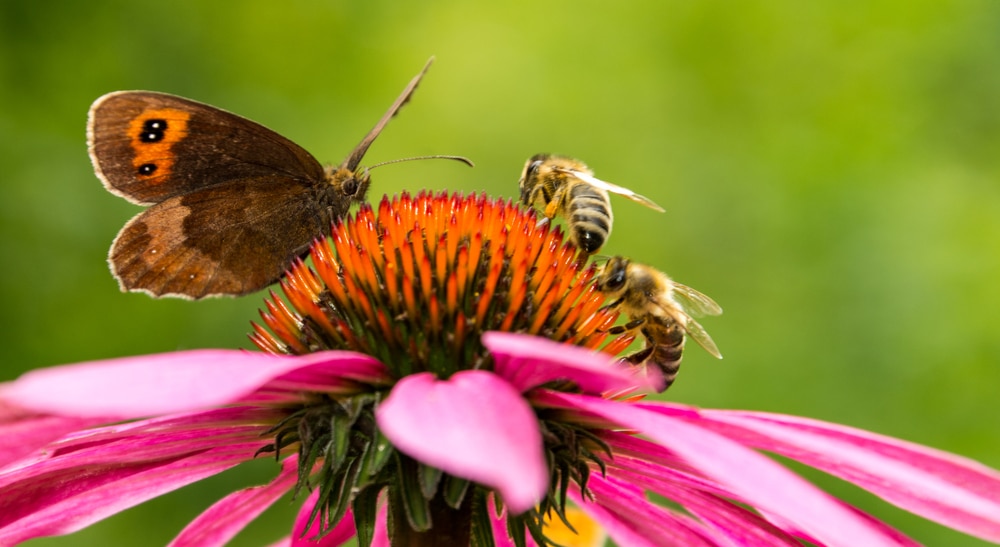
A pollinator is any insect or animal that transfers pollen between flowering plants. It may even surprise you to learn how many creatures are responsible for pollination.
Bees and butterflies are some of the most well-known pollinators. They collect nectar from flowers as a food source and, in the process, get covered in pollen. When they visit another flower, this pollen gets dropped off so the plant can reproduce.
Beetles and other insects, such as flies, also play a vital role as pollinators, so we must create healthy environments for them to thrive.
But pollinators don’t only belong to the insect kingdom. Many species of bats and birds also transfer pollen between flowering plants. The most well-known is the hummingbird, which drinks nectar from the plants like butterflies and bees and incidentally transfers pollen in the process.
The honeycreeper, the sunbird, and many species of oriole are other examples of avian pollinators. Let’s not forget our bat friends either, such as the lesser long-nosed bat and the cave nectar bat, which also ensure the survival of the plants they visit.
There are even some land-mammal pollinators that brush against flowering plants, transferring the pollen. In fact, 75% of all flowering plants rely on pollinators in some form. These creatures include bears, lemurs, rabbits, rodents, and even monkeys!
Are There Any Pollinators That Aren’t Insects Or Animals?
While most flowering plants rely on pollinators like bees, birds, bats, and butterflies, some pollinate differently. For example, some plants are self-pollinating, meaning pollen naturally falls from the male part of the plant onto the female part.
What’s more, there are some plants whose pollen the elements transfer. These transfers can include rainwater runoff washing pollen between plants and wind blowing it from plant to plant. This is common in tree species such as birch, conifers, and hazel.
What Do Pollinators Do?
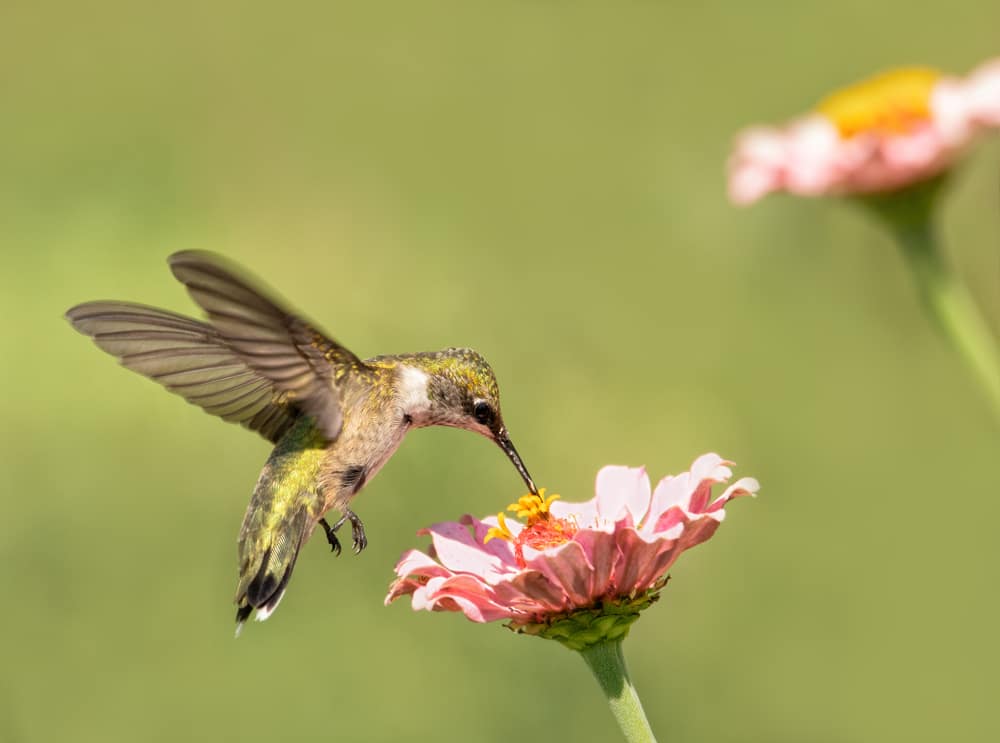
Pollinators transfer pollen between flowering plants. However, this is a simple explanation.
When these animals visit a plant, whether for feeding or simply because they’re just passing by, pollen gets stuck to them. Many species of bees, for example, have pollen baskets (collections of hair) on their legs, and they’ll collect pollen and take it back to the hive. But as they fly around, some of this powdery yellow substance is delivered to other plants.
The stamen, the male part of the plant, makes the pollen. This pollen sticks to pollinators, which then visit another plant and transfer it to the female part, called the stigma.
The stigma is sticky, which means pollen easily adheres to it. From here, the pollen encourages the production of fruits and seeds, which then spread to allow new plants to grow.
As a side note, most flowering plants have male and female reproductive parts but usually require pollen from another plant of the same species. There are some self-pollinating plants, though.
Why Are Pollinators Essential?
Some flowering plants are self-pollinating, but they’re few and far between.
Self-pollination occurs when the flower produces pollen in the anthers (a part of the stamen), which then falls onto the stigma. However, most plants rely on pollinators to do this job for them.
So, why does that matter to you and me?
They Affect The Ecosystem
Without flowering plants, the soil would not be stable, and there would be less oxygen in the air. On top of this, flowering plants help to support local wildlife, so it’s easy to see why they’re crucial for a healthy ecosystem.
They Affect Our Crops
Pollinators are essential in aiding the growth of human crops. Without them, many of your favorite foods would no longer be available.
In fact, the food on your dinner plate might cease to exist without pollinators. It’s estimated that one in every three bites of your food results from pollination by insects and animals. Imagine the reduction in your food choices if pollinators no longer existed!
And They Affect The Economy
Another reason pollinators play an essential role for us is for our economy. The agricultural industry would significantly struggle without pollinators as crops would fail to thrive. In fact, honey bees contribute around $15 billion annually purely through crop production.
Taking bees out of the equation, other insect pollinators contribute as much as $10 billion worth of crops annually.
In short, if pollinators’ populations shrunk, it would severely affect our economy.
How Can You Help Protect Pollinators?
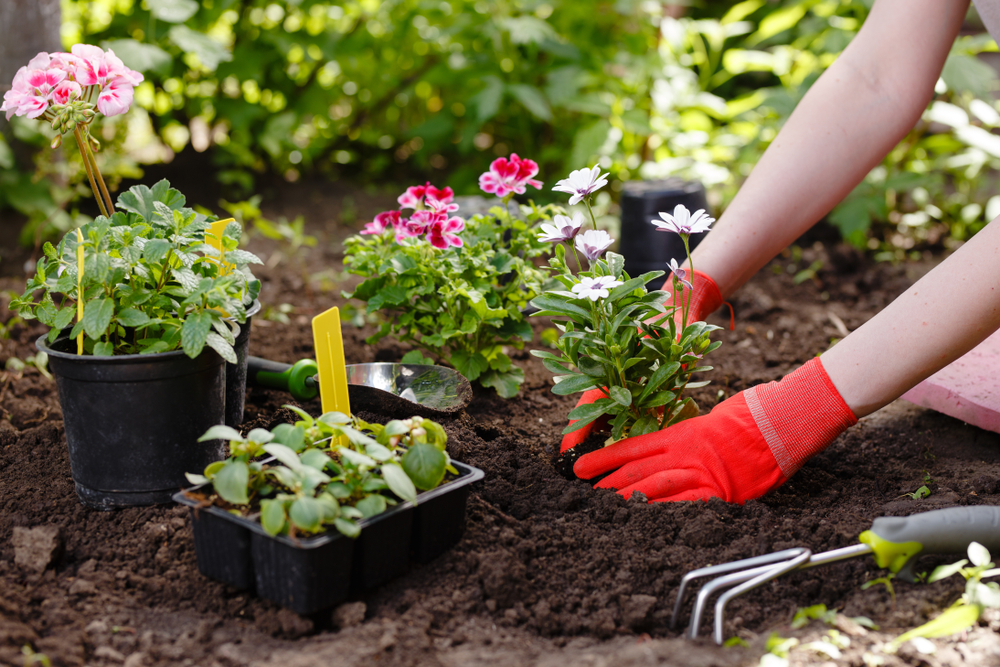
Understanding how important pollinators are makes you want to protect them. Many pollinators, such as the honey bee, face serious threats such as habitat loss, climate change, and the use of pesticides.
But you and I can do our part by making simple changes in our backyards. I’ve really made a point of doing this recently, and I’d like to share what I’ve been doing.
Reduce Pesticides
Did you know using pesticides in your garden can affect the memory and learning abilities of bees? I’ve drastically reduced the number of chemicals I use in my garden and have opted for organic methods such as encouraging natural predation (introducing predators like ladybugs and lacewings that will feed on aphids) and placing organic materials around my plants, such as eggshells, to deter pests like slugs and snails.
Let Part Of Your Lawn Grow Wild
I’ve also allowed a portion of my lawn to grow wild. This shelters pollinators and encourages the growth of wildflowers which in turn gives our pollinators a viable food source.
I was a little concerned that this would look unsightly, but I’ve been surprised at how good it looks. I chose a strip of lawn along one of the fences, around 18 inches wide and 10 feet long. This means it hasn’t taken over the entire garden and adds something of a meadow or woodland feel.
Depending on where you live, there may be local laws regarding the permitted length of your lawn. It’s essential to check with your local authorities to avoid getting into trouble.
Provide Them With A Water Source
Providing a water source in your backyard can help protect pollinators. You don’t need to install a large pond, though. I’ve placed a few small containers of water with rocks in them so butterflies, bees, beetles, and other insect pollinators can get a drink. You’ll be amazed at how many critters something so small can attract.
Plant Native Flowers
If you’re planting flowering plants in your garden, always plant native species (you can even plant to attract butterflies but not bees and you can make a butterfly garden!). There’s a natural relationship between native plants and local wildlife, so these are much more likely to attract pollinators and provide them with the necessary food sources. I’ve planted some coneflowers, yarrow, and blue wood asters.
When I did this, I gradually started noticing more pollinators. It’s proven that native plants will bring in more native pollinators, and this is evident in what I’ve seen in my garden. It does take time for this to happen, but it will.
Final Thoughts
It’s crucial for all of us to do our bit to protect pollinators and ensure they have everything they need to continue their important work. Taking even one step can profoundly affect the pollinators in your garden and as a whole.
